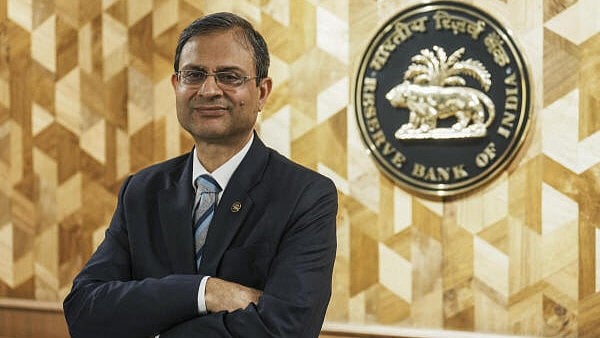
Reserve Bank of India’s new Governor Sanjay Malhotra.
Credit: PTI Photo
New Delhi: After a slowdown in GDP growth in the first half of the current financial year, India's economic growth is likely to improve in 2025 on the back of higher consumer and business confidence, Reserve Bank of India Governor Sanjay Malhotra said.
"Prospects for the Indian economy are expected to improve after the slowdown in the pace of economic activity in the first half of 2024-25. Consumer and business confidence for the year ahead remain high and the investment scenario is brighter as corporations step into 2025 with robust balance sheets and high profitability," Malhotra said in foreword to the RBI's Financial Stability Report released on Monday.
India's gross domestic product (GDP) growth fell to 6% in the first half of the current financial year after recording a robust 8.2% and 8.1% expansion recorded in H1 and H2 of 2023-24, respectively. In the July-September quarter (Q2), it fell to a seven quarter-low of 5.4%.
"Despite this recent deceleration, structural growth drivers remain intact," the RBI noted in its half-yearly publication. According to the central bank, India's GDP growth is expected to recover in Q3 and Q4 supported by pick-up in domestic drivers, mainly public consumption and investment, strong service exports and easy financial conditions".
"On the downside, the softness in industrial activity, especially in the manufacturing sector, moderation in urban demand, global spillovers and protective trade and industrial policies pose risks to the outlook," the RBI said.
"As we strive to preserve financial stability to support a higher growth path for the Indian economy, our focus remains steadfast on maintaining stability of financial institutions and, more broadly, systemic stability," Malhotra noted in his first commentary on the Indian economy after taking charge as the RBI governor earlier this month.
Meanwhile, the Financial Stability Report noted that bad loans of the Indian banking system might increase in 2025. The gross non-performing asset (NPA) of scheduled commercial banks is likely to increase to 3% by March 2026 from a 12-year low of 2.6% recorded in September 2024.
"While the banking sector is assessed to be broadly resilient, a few banks are found vulnerable, when measured under the key risk indicators framework," the report said.
The RBI flagged concern over a sharp rise in write-offs, especially among private sector banks, which could be partly "masking worsening asset quality in this segment and dilution in underwriting standards".